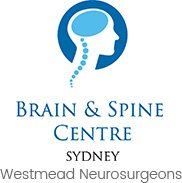Slipped Vertebrae
The spine consists of several vertebrae stacked one on top of the other surrounding and protecting the spinal cord. In a condition called spondylolisthesis, one of the vertebrae slips forward in relation to the others. This can constrict the spinal canal causing pain and disability. In some cases, symptoms are absent and may develop later in life.
Spondylolisthesis usually occurs in the lower back or lumbar region due to age-related degeneration or a fracture of the spine. The condition affects women more than men and usually those above the age of 50.
Discs present between the vertebrae cushion the spine during movement. These intervertebral discs may degenerate with age causing them to shrink, stiffen or bulge. This can lead to arthritis which usually weakens the ligaments and joints supporting the adjacent vertebrae. As a result, a vertebra may loosen and slip forward. Sometimes an injury or fracture that has occurred during adolescence may undergo stress with advancing age leading to spondylolisthesis.
Pain usually develops when there is compression of the spinal nerves or cord and it is commonly felt in the lower back and legs. Other symptoms include numbness and tingling. Standing or walking for extended periods typically produces a feeling of leg weakness and aggravates symptoms. Bending forward or sitting widens the spinal canal providing temporary relief.
Your doctor will perform a thorough physical examination and imaging studies such as X-rays, CT scans and MRIs to identify the slipped vertebra and evaluate the surrounding tissue.
Nonsurgical treatment is successful in most cases of spondylolisthesis. The American Spine Center offers a variety of physical therapy methods, exercise programs and other aids to control your symptoms and promote healing. You will be taught specific exercises to stretch and strengthen the lower back and abdominal area. Pain and anti-inflammatory medications will be prescribed. Steroid injections may be administered in case of severe pain and swelling. A back brace may be recommended to support the spine. Holistic treatments such as acupuncture, biofeedback and nutritional supplements may also be offered to help you manage your pain and improve your overall health. Occasionally symptoms are persistent in which case, surgery is advised.




